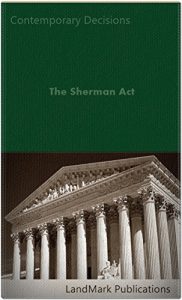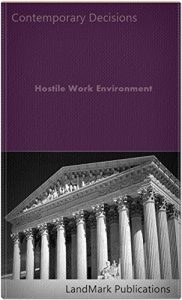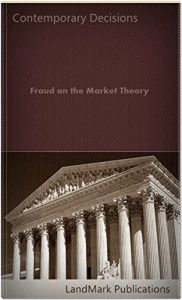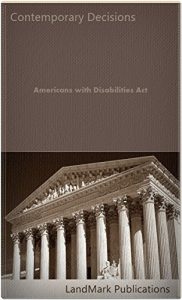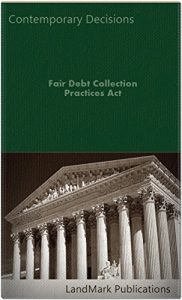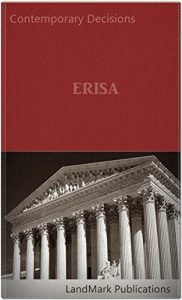THIS CASEBOOK contains a selection of 210 U. S. Court of Appeals decisions that analyze and interpret provisions of the Sherman Antitrust Act. The selection of decisions spans from 2005 to the date of publication.
Section 1 of the Sherman Act provides that every contract, combination in the form of trust or otherwise, or conspiracy, in restraint of trade or commerce among the several States, or with foreign nations, is hereby declared to be illegal. The existence of an agreement is the hallmark of a Section 1 claim. For liability under § 1 to exist, there must be a unity of purpose or a common design and understanding or a meeting of the minds in an unlawful arrangement. This can be shown by putting forth direct evidence of concerted action, such as a document or conversation explicitly manifesting the existence of the agreement in question, or circumstantial evidence of conscious parallel conduct and other plus factors. The term plus factors refers to circumstances demonstrating that the wrongful conduct was conscious and not the result of independent business decisions of the competitors. [Footnotes omitted.] Havens v. Mobex Network Services, LLC, (3rd Cir. 2016).
"Section 1 [of the Sherman Act] may be violated 'when a group of independent competing firms engage in a concerted refusal to deal with a particular supplier, customer, or competitor.'" Evergreen Partnering Group v. Pactiv Corp. ("Evergreen I"), 720 F.3d 33 (1st Cir. 2013) at 42 (quoting González-Maldonado v. MMM Healthcare, Inc., 693 F.3d 244, 249 (1st Cir. 2012)). Section 1 "reaches only 'agreements'" and "does not reach independent decisions, even if they lead to the same anticompetitive result as an actual agreement among market actors." White v. R.M. Packer Co., 635 F.3d 571, 575 (1st Cir. 2011). Evergreen Partnering Group, Inc. v. Pactiv Corporation, (1st Cir. 2016).
The Sherman Antitrust Act is based on an often-difficult distinction between concerted and independent, unilateral action. Concerted activity is scrutinized more closely than unilateral behavior because "'[c]oncerted activity inherently is fraught with anticompetitive risk' insofar as it 'deprives the marketplace of independent centers of decisionmaking that competition assumes and demands.'" Am. Needle, 560 U.S. at 190, 130 S.Ct. 2201 (quoting Copperweld Corp. v. Indep. Tube Corp., 467 U.S. 752, 768-69, 104 S.Ct. 2731, 81 L.Ed.2d 628 (1984)). Specifically, Section 1 regulates concerted activity between two or more entities, outlawing "[e]very contract, combination ... or conspiracy, in restraint of trade," 15 U.S.C. § 1, a provision that has subsequently been limited to target only "unreasonable" restraints of trade. To prevail on a claim under § 1, a plaintiff must prove: (1) a contract, combination, or conspiracy; (2) producing adverse, anticompetitive effects in the relevant market; and (3) resulting in injury. See Expert Masonry, Inc. v. Boone Cty., Ky., 440 F.3d 336, 342 (6th Cir.2006). Med. Ctr. at Elizabeth Place v. Atrium Health Sys., 817 F. 3d 934 (6th Cir. 2016).
. . .
Section 1 of the Sherman Act provides that every contract, combination in the form of trust or otherwise, or conspiracy, in restraint of trade or commerce among the several States, or with foreign nations, is hereby declared to be illegal. The existence of an agreement is the hallmark of a Section 1 claim. For liability under § 1 to exist, there must be a unity of purpose or a common design and understanding or a meeting of the minds in an unlawful arrangement. This can be shown by putting forth direct evidence of concerted action, such as a document or conversation explicitly manifesting the existence of the agreement in question, or circumstantial evidence of conscious parallel conduct and other plus factors. The term plus factors refers to circumstances demonstrating that the wrongful conduct was conscious and not the result of independent business decisions of the competitors. [Footnotes omitted.] Havens v. Mobex Network Services, LLC, (3rd Cir. 2016).
"Section 1 [of the Sherman Act] may be violated 'when a group of independent competing firms engage in a concerted refusal to deal with a particular supplier, customer, or competitor.'" Evergreen Partnering Group v. Pactiv Corp. ("Evergreen I"), 720 F.3d 33 (1st Cir. 2013) at 42 (quoting González-Maldonado v. MMM Healthcare, Inc., 693 F.3d 244, 249 (1st Cir. 2012)). Section 1 "reaches only 'agreements'" and "does not reach independent decisions, even if they lead to the same anticompetitive result as an actual agreement among market actors." White v. R.M. Packer Co., 635 F.3d 571, 575 (1st Cir. 2011). Evergreen Partnering Group, Inc. v. Pactiv Corporation, (1st Cir. 2016).
The Sherman Antitrust Act is based on an often-difficult distinction between concerted and independent, unilateral action. Concerted activity is scrutinized more closely than unilateral behavior because "'[c]oncerted activity inherently is fraught with anticompetitive risk' insofar as it 'deprives the marketplace of independent centers of decisionmaking that competition assumes and demands.'" Am. Needle, 560 U.S. at 190, 130 S.Ct. 2201 (quoting Copperweld Corp. v. Indep. Tube Corp., 467 U.S. 752, 768-69, 104 S.Ct. 2731, 81 L.Ed.2d 628 (1984)). Specifically, Section 1 regulates concerted activity between two or more entities, outlawing "[e]very contract, combination ... or conspiracy, in restraint of trade," 15 U.S.C. § 1, a provision that has subsequently been limited to target only "unreasonable" restraints of trade. To prevail on a claim under § 1, a plaintiff must prove: (1) a contract, combination, or conspiracy; (2) producing adverse, anticompetitive effects in the relevant market; and (3) resulting in injury. See Expert Masonry, Inc. v. Boone Cty., Ky., 440 F.3d 336, 342 (6th Cir.2006). Med. Ctr. at Elizabeth Place v. Atrium Health Sys., 817 F. 3d 934 (6th Cir. 2016).
. . .
